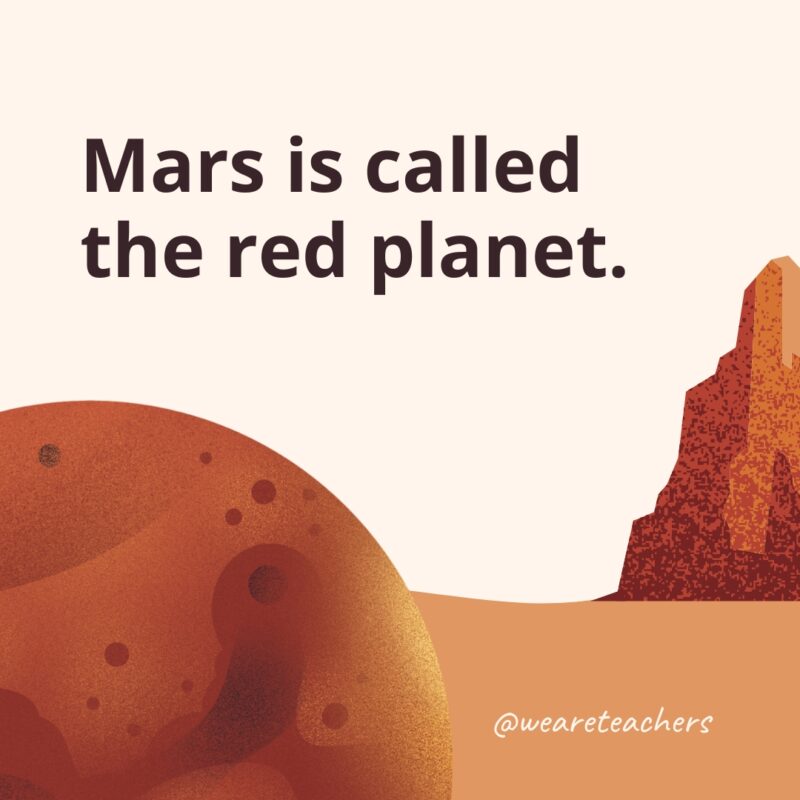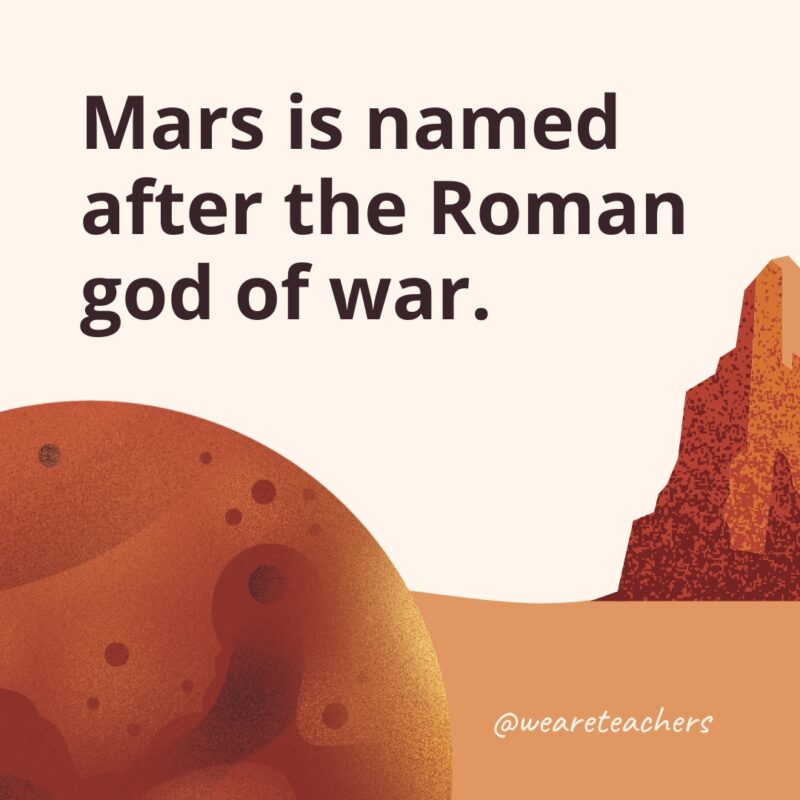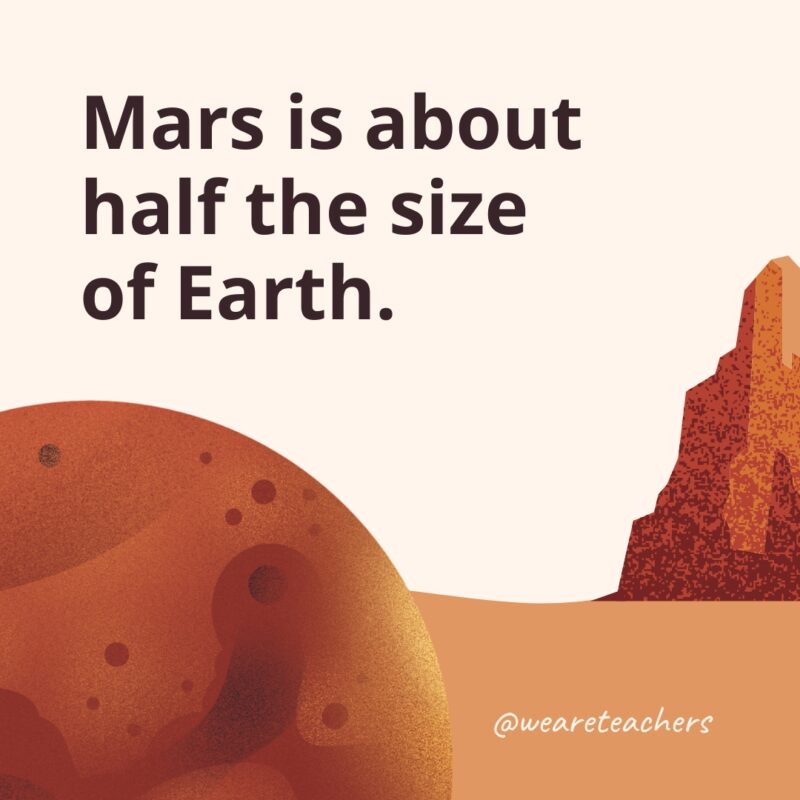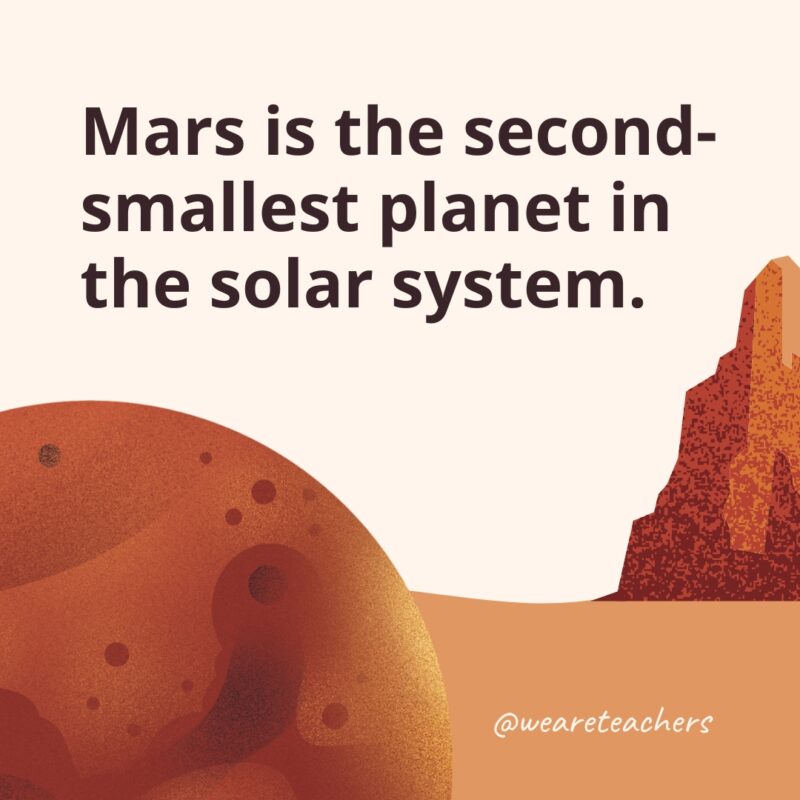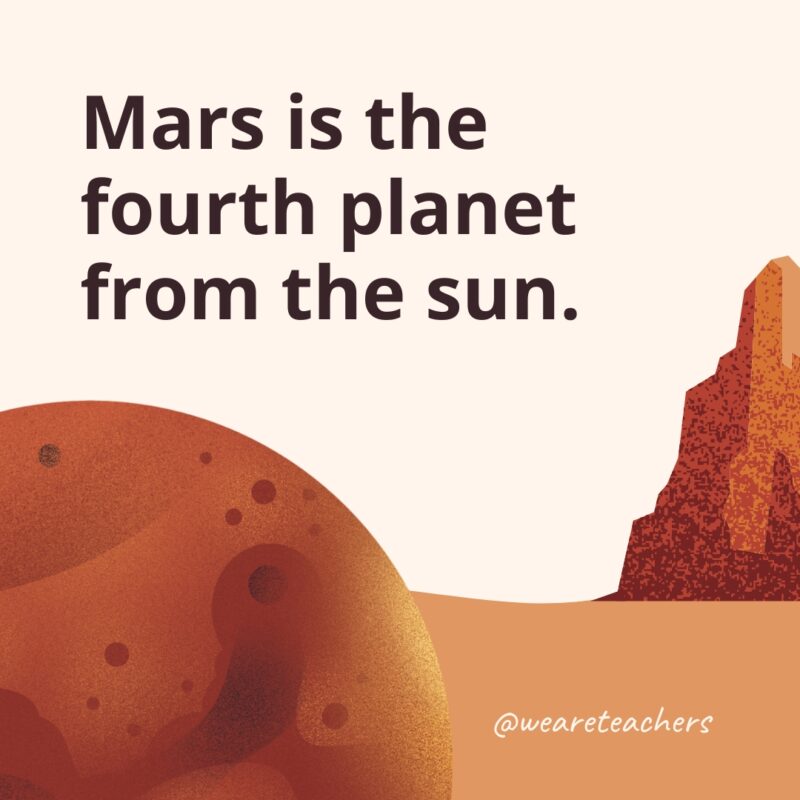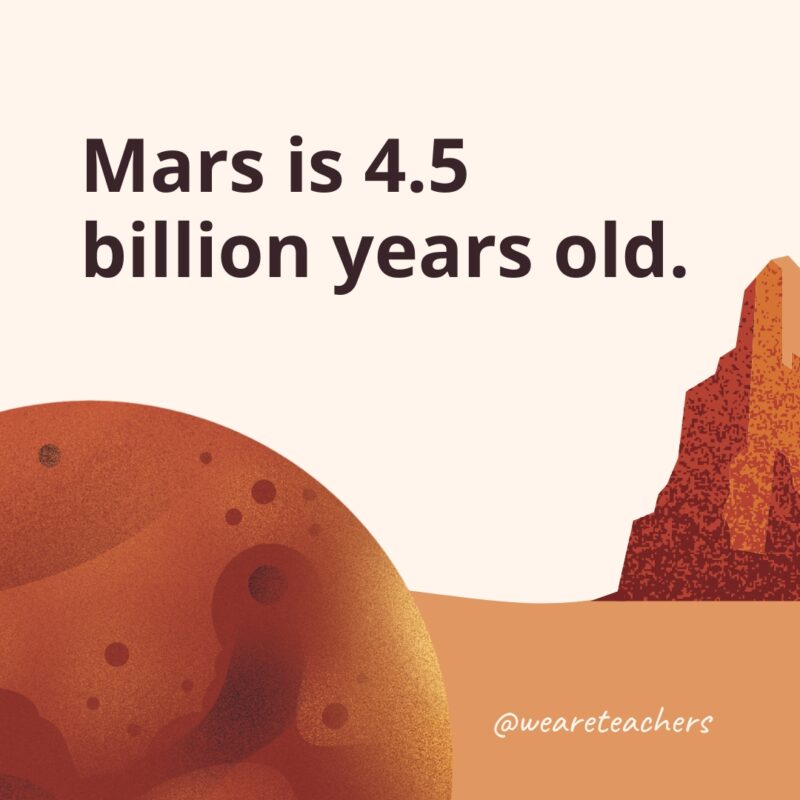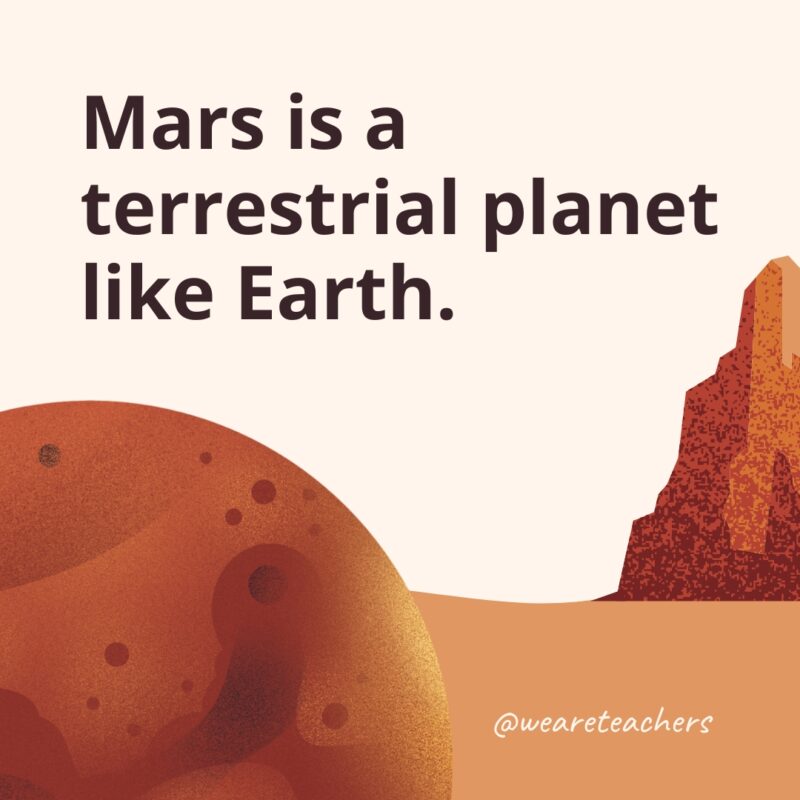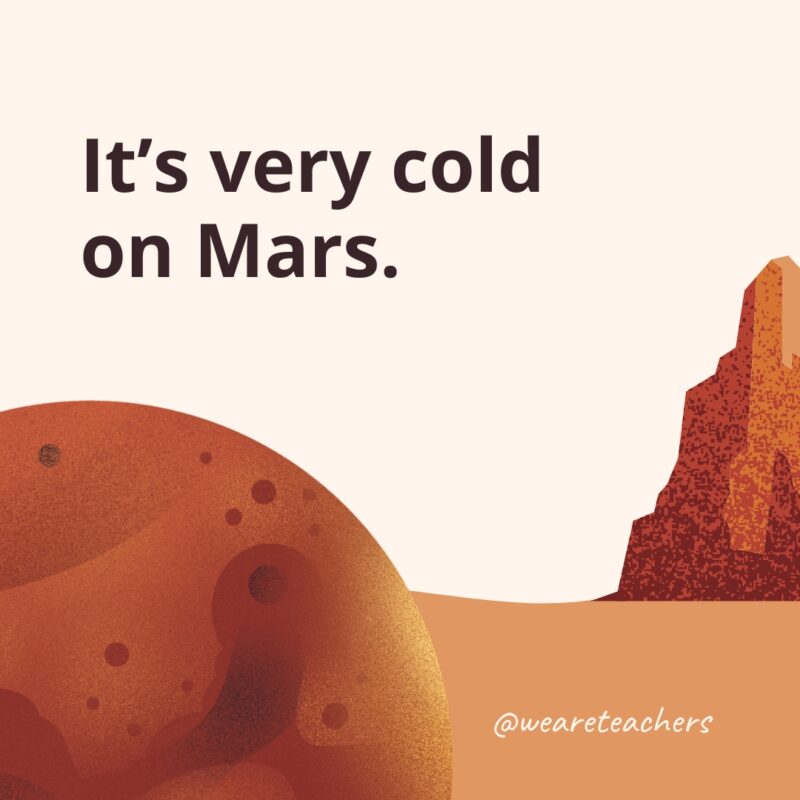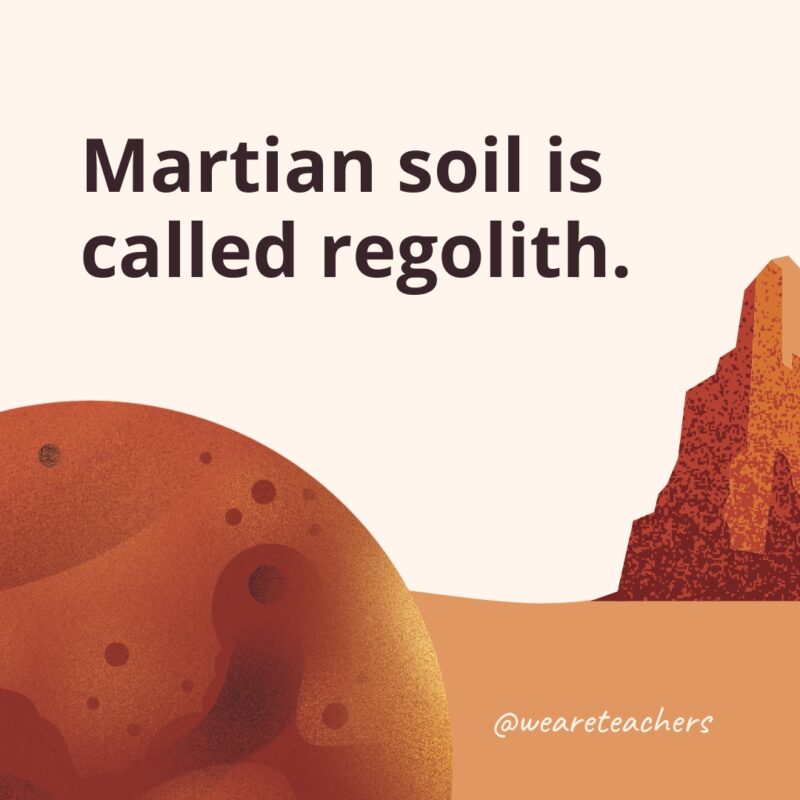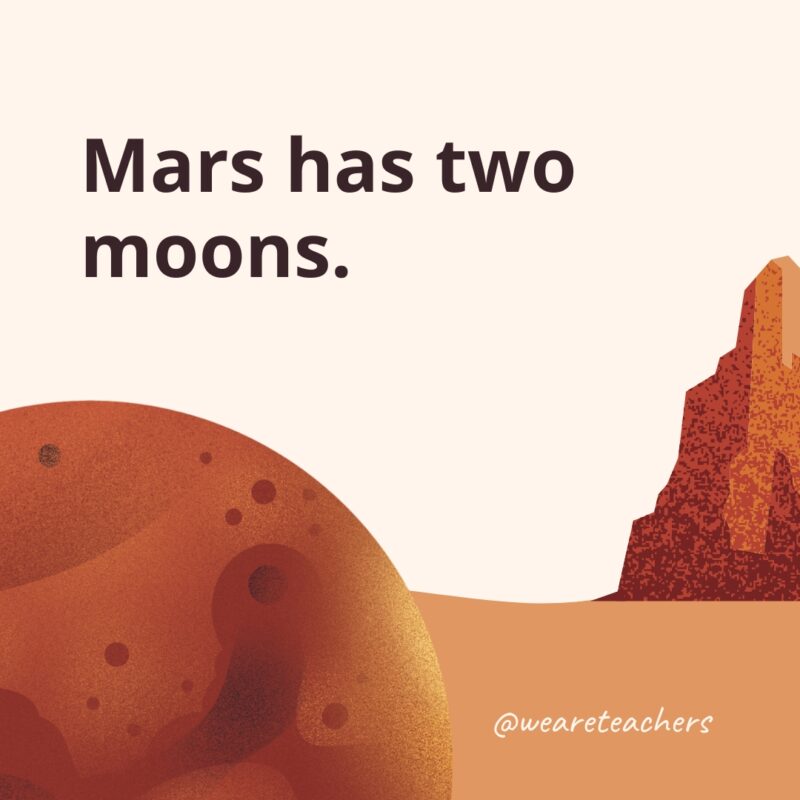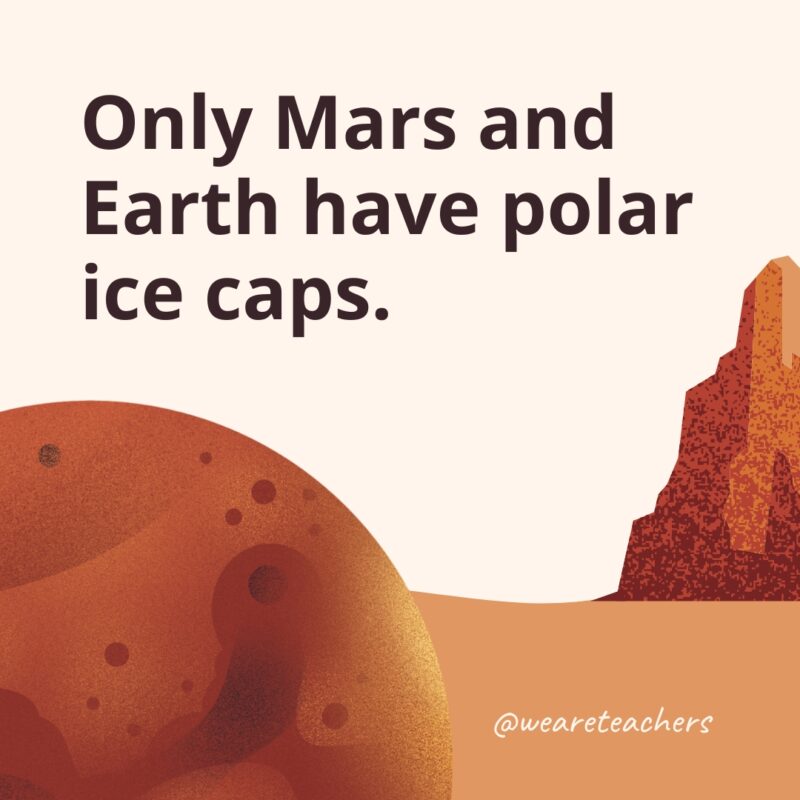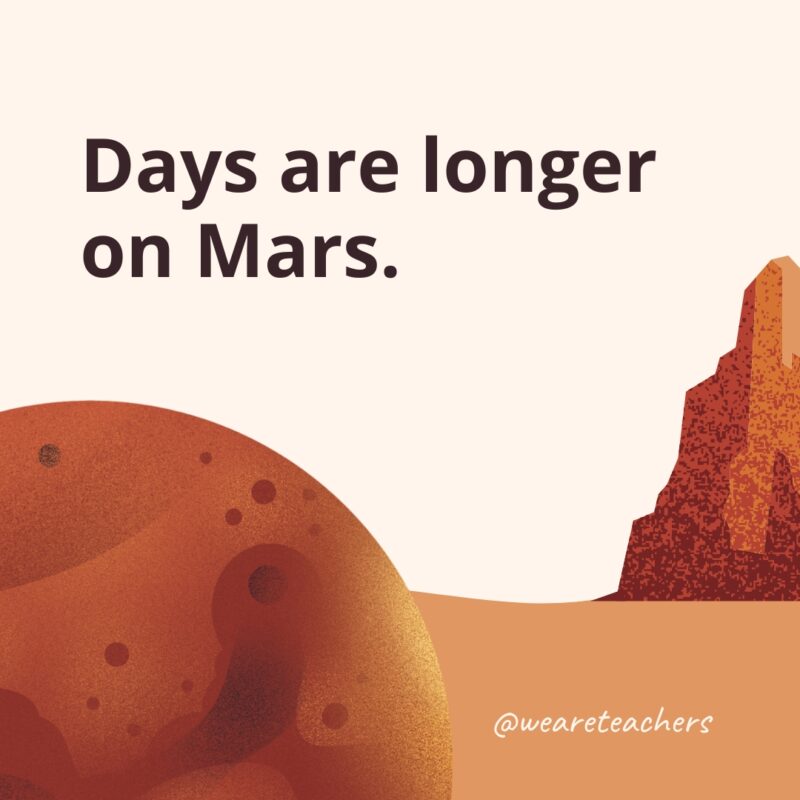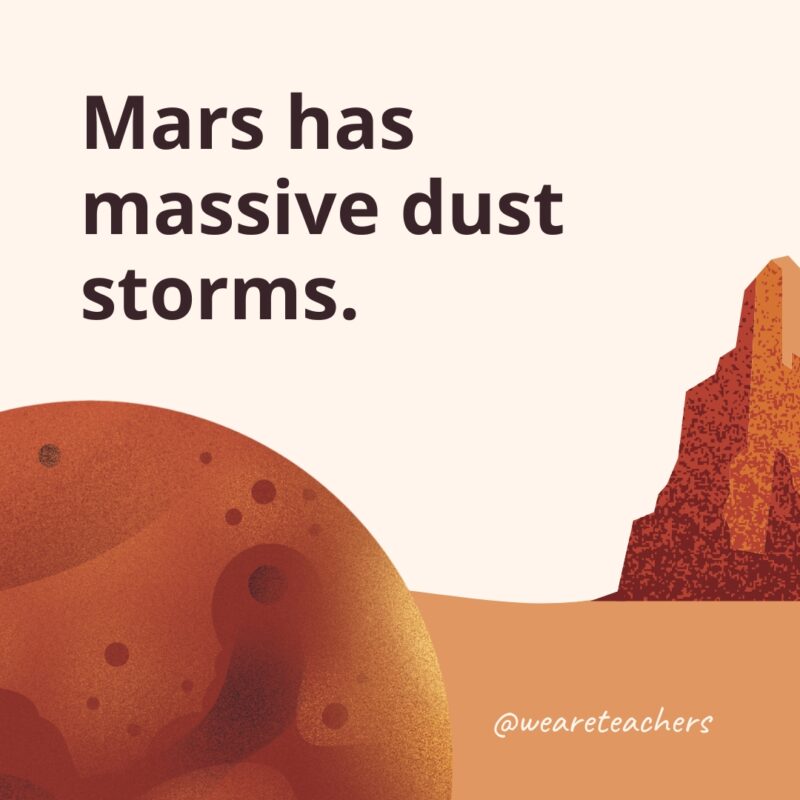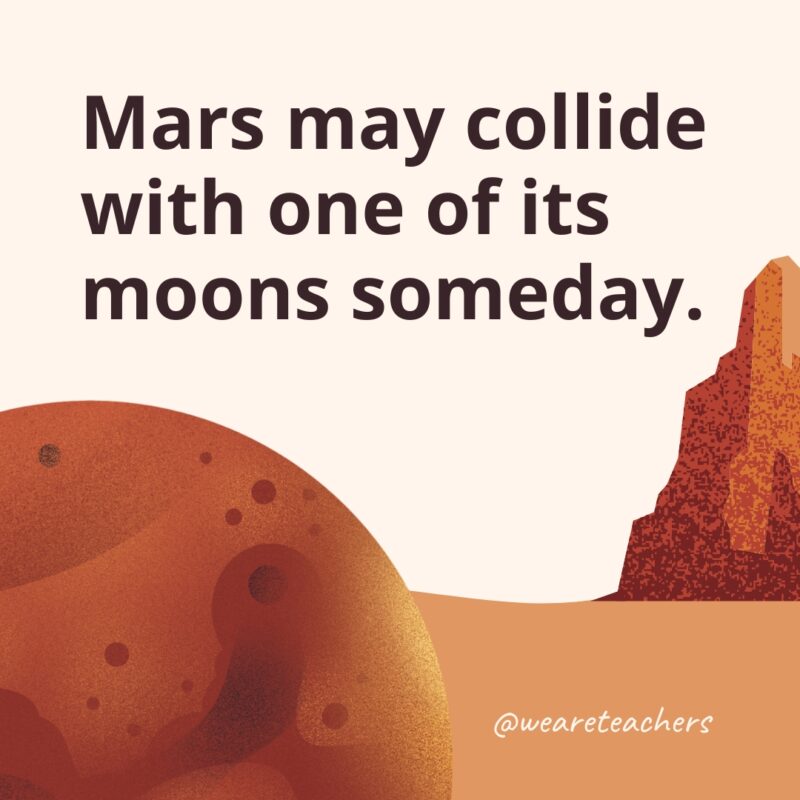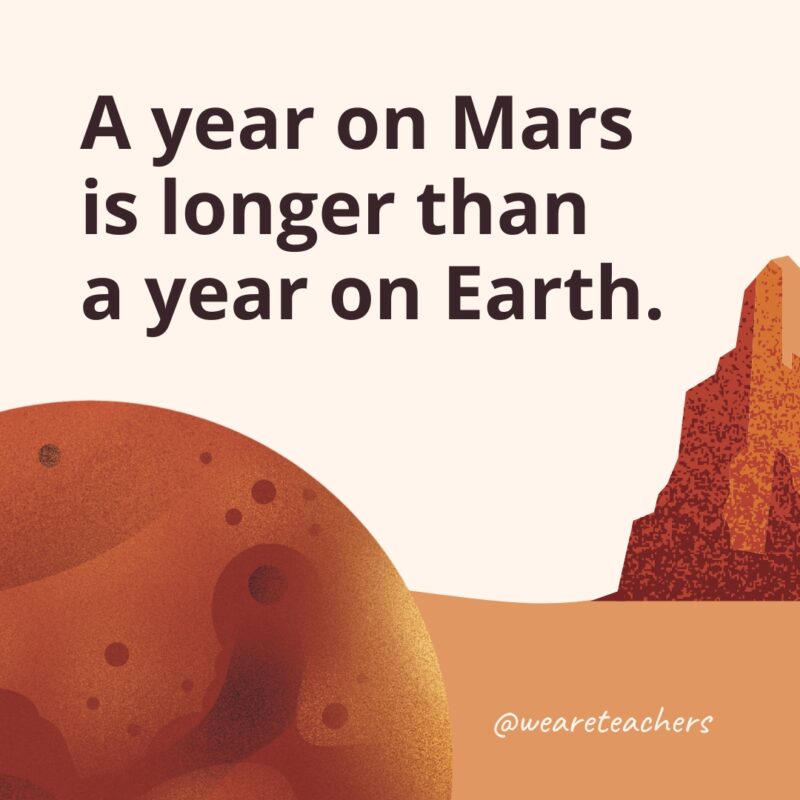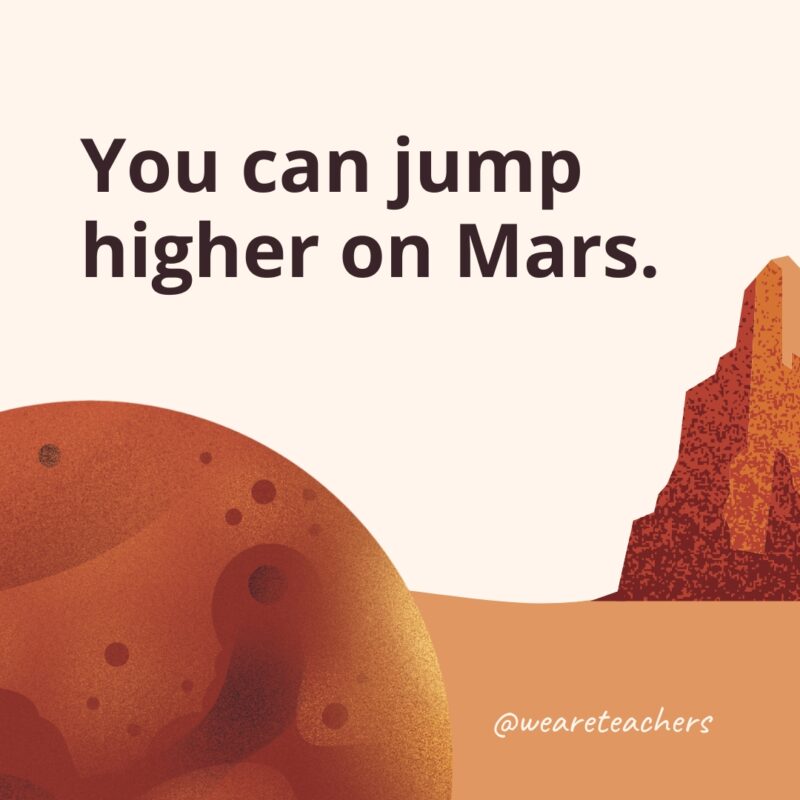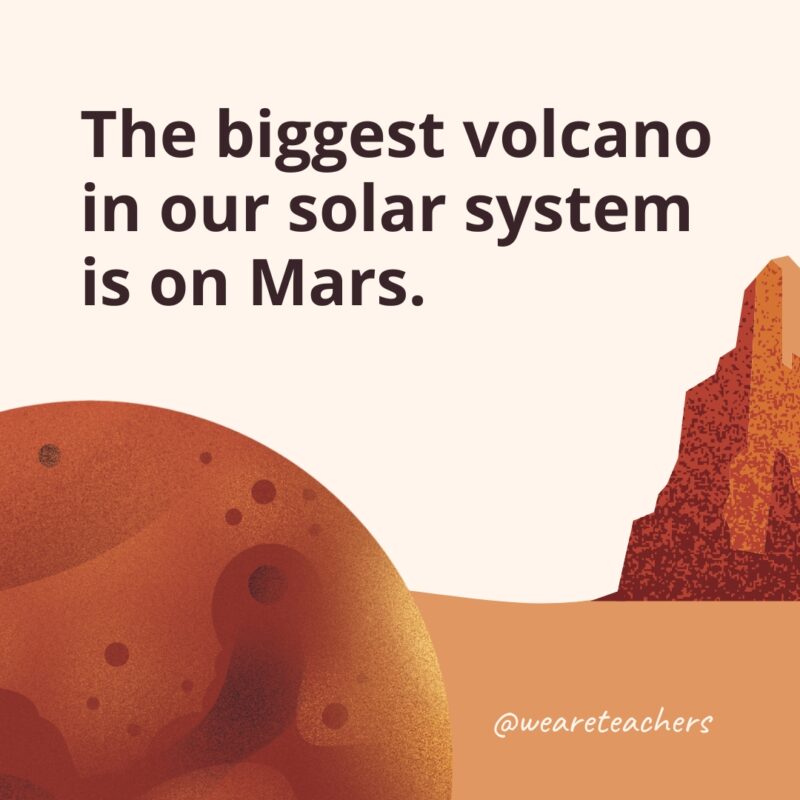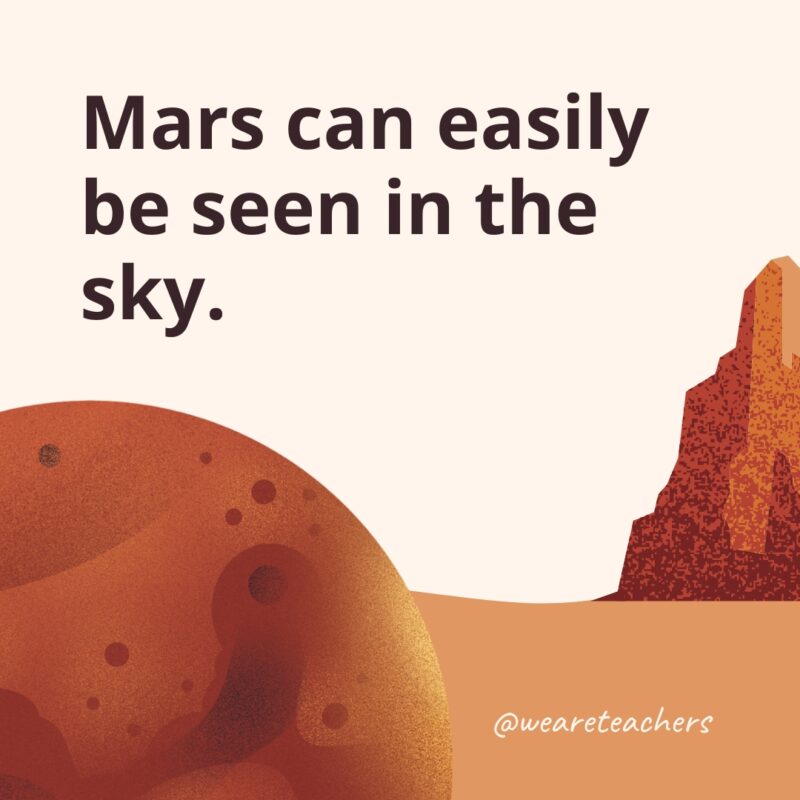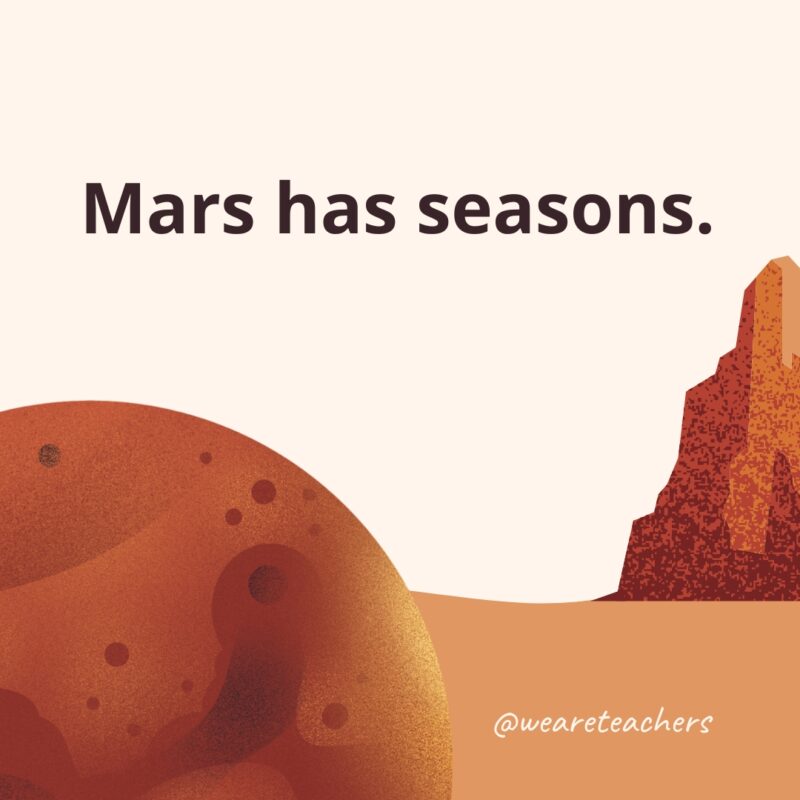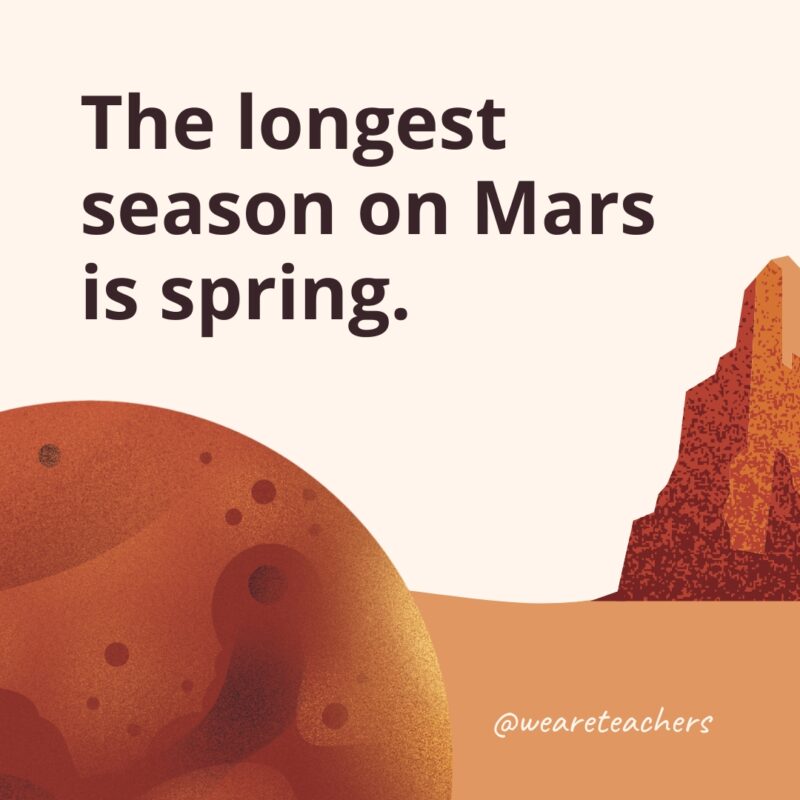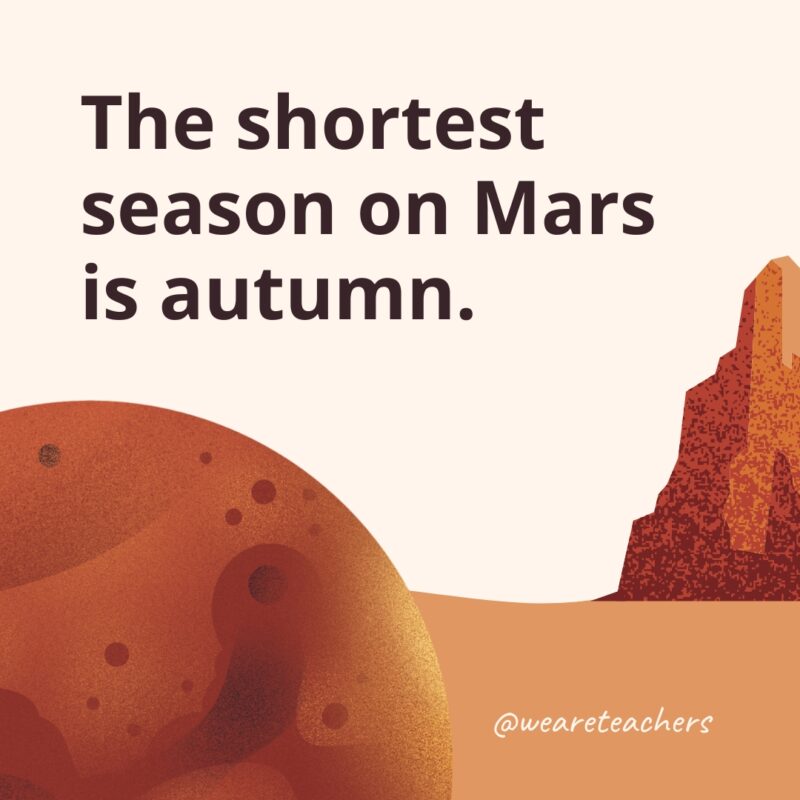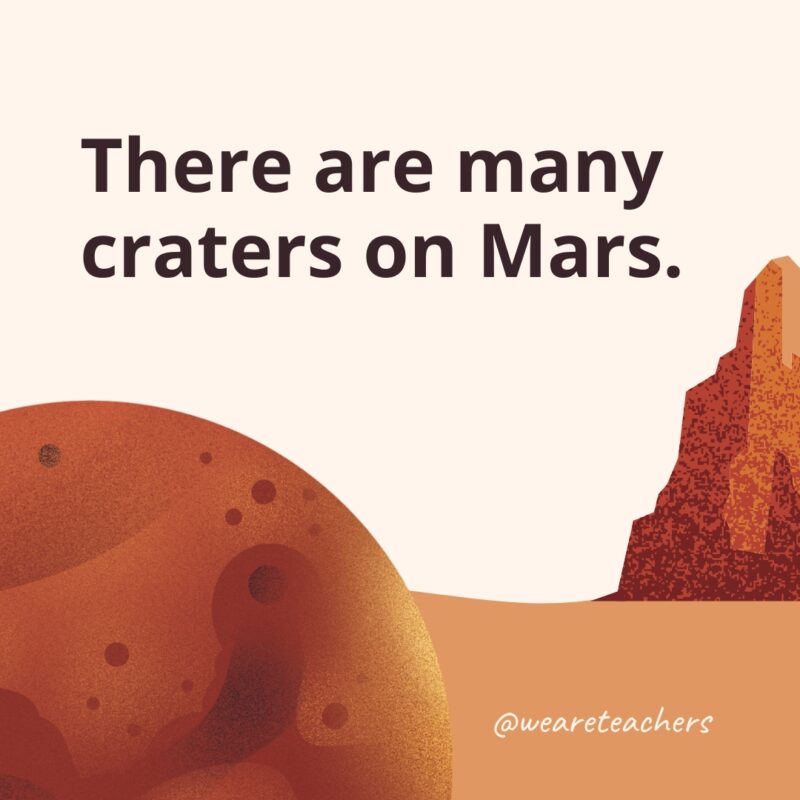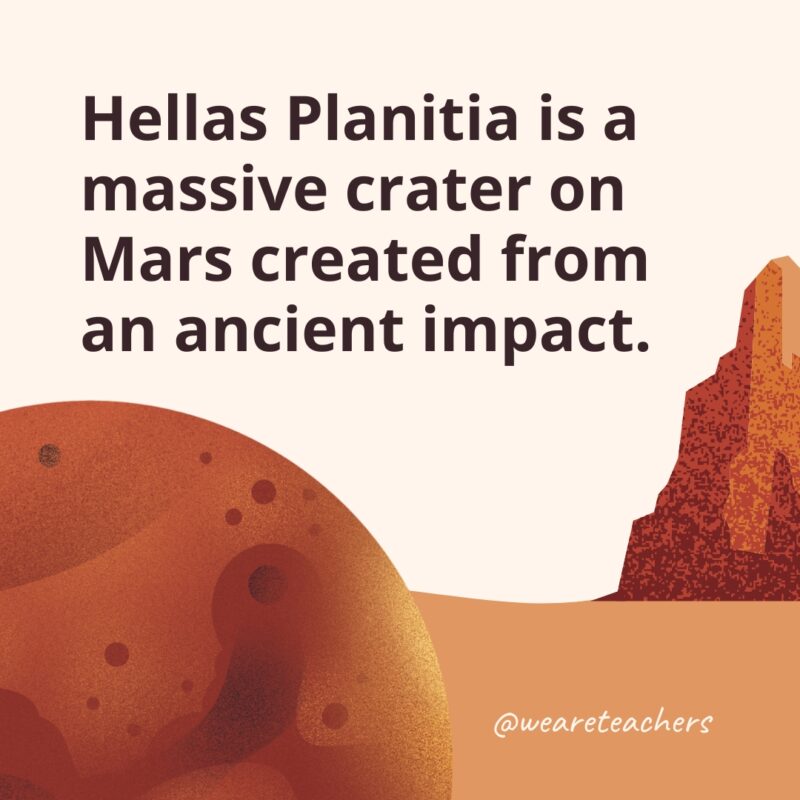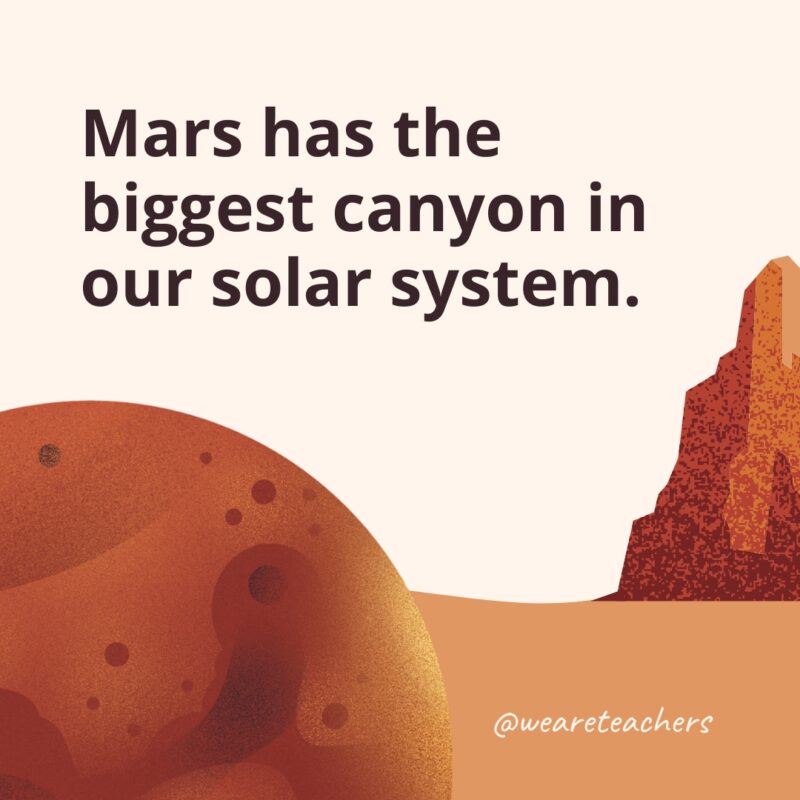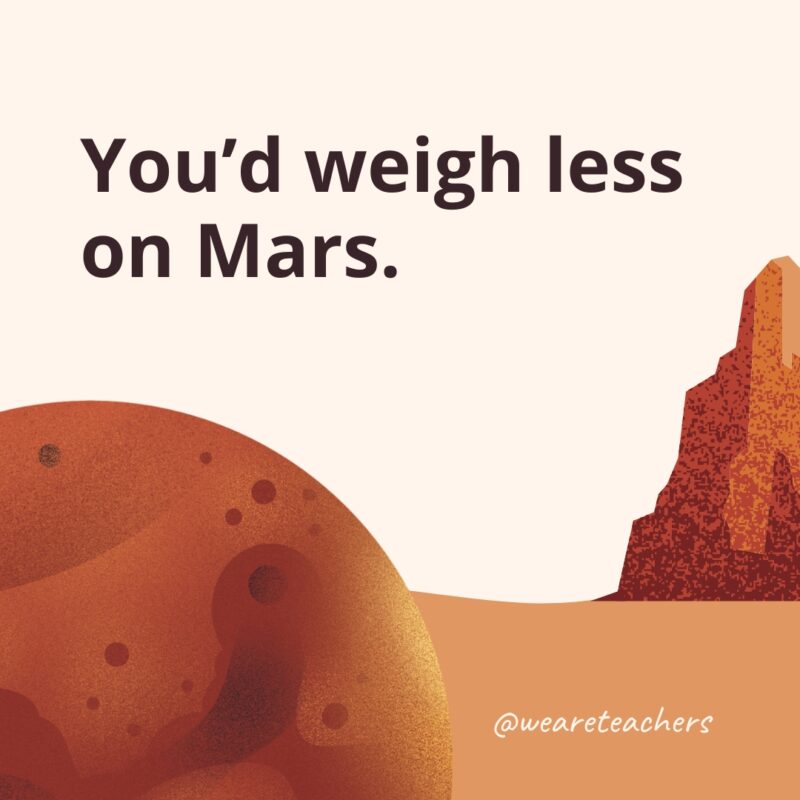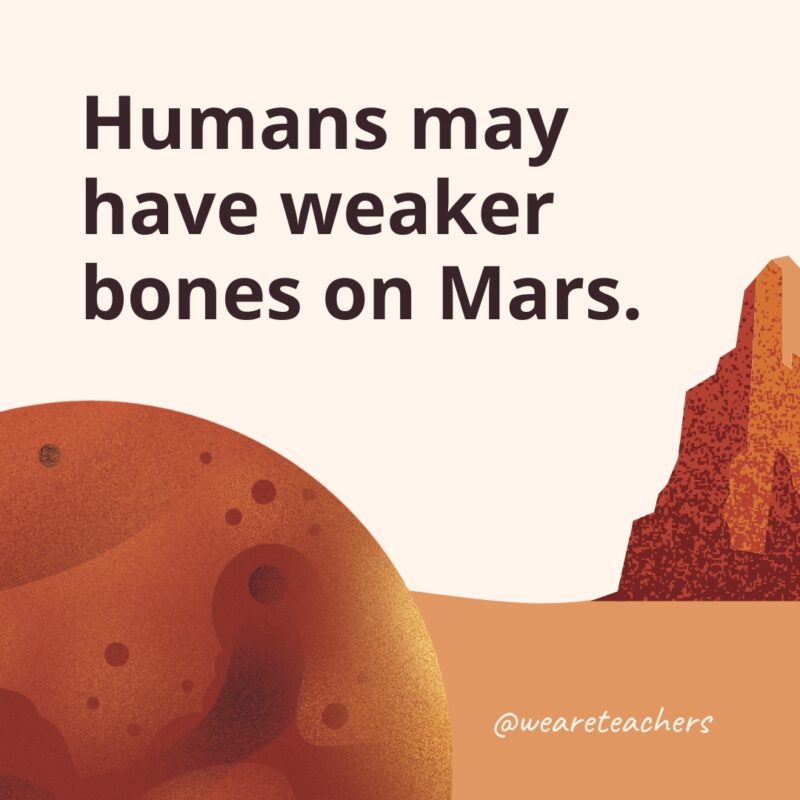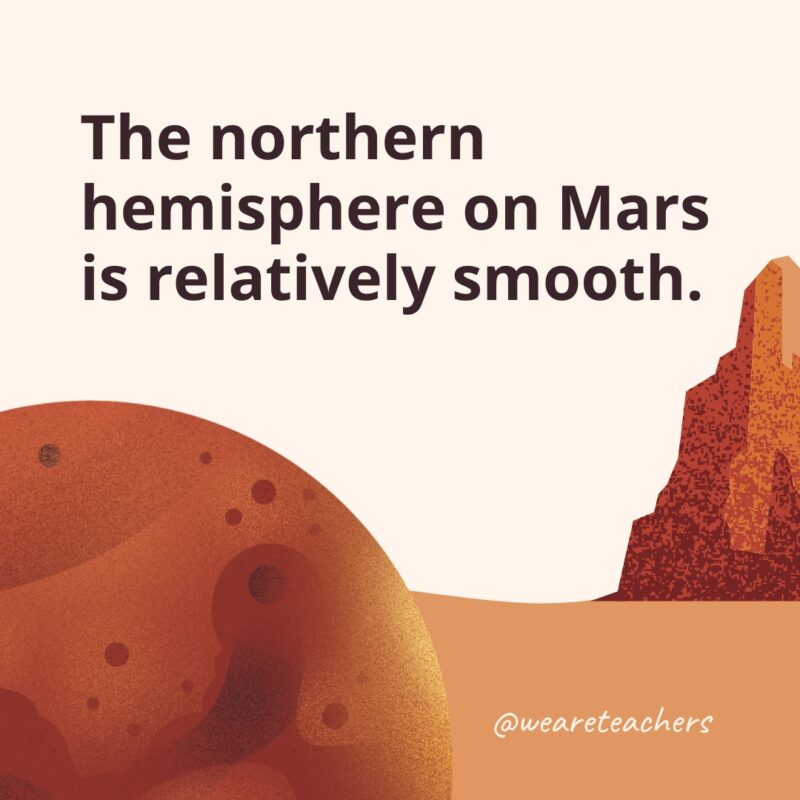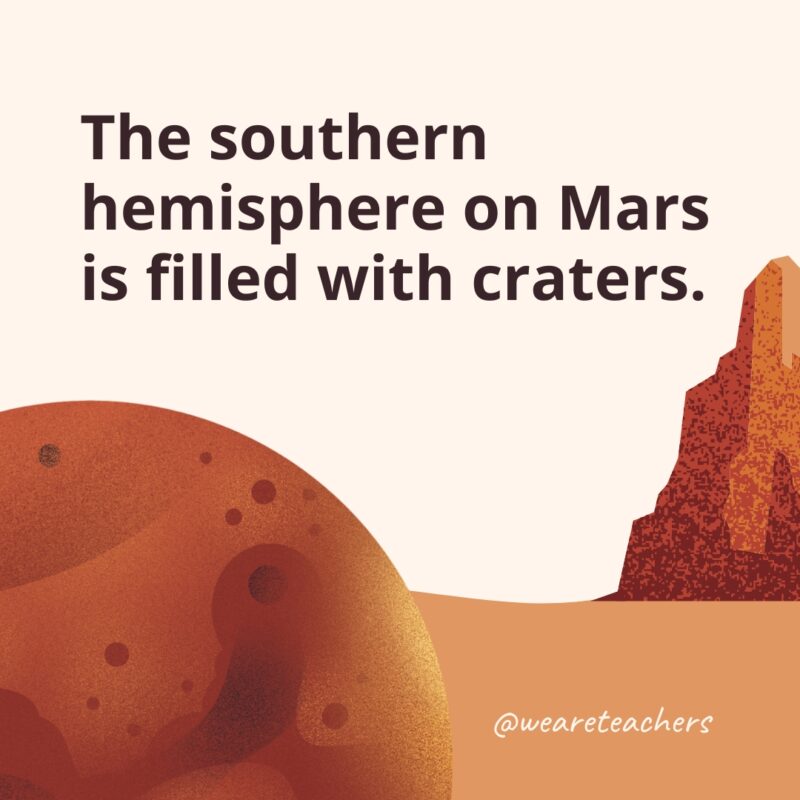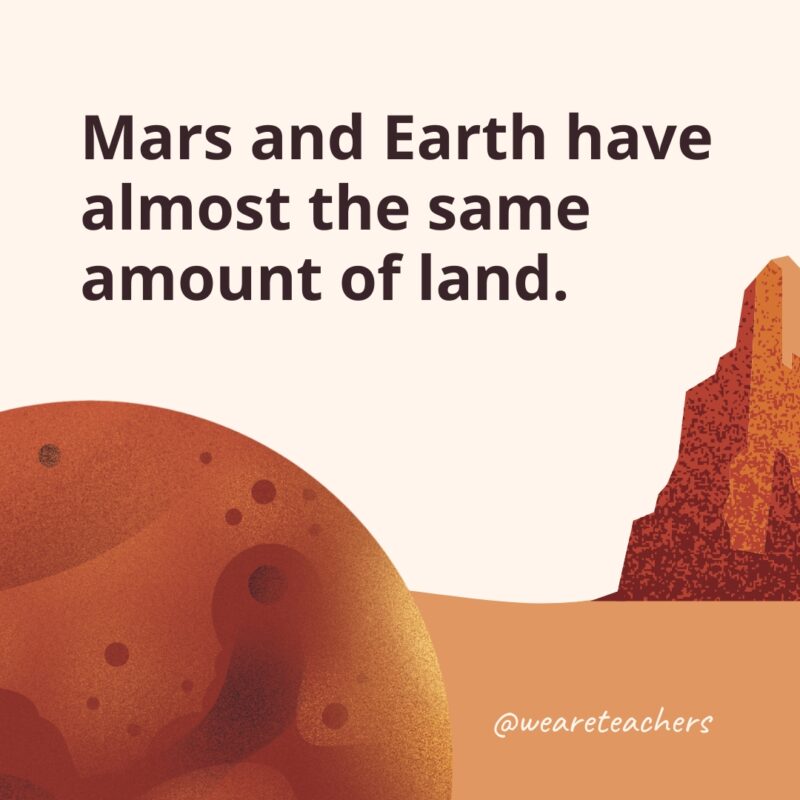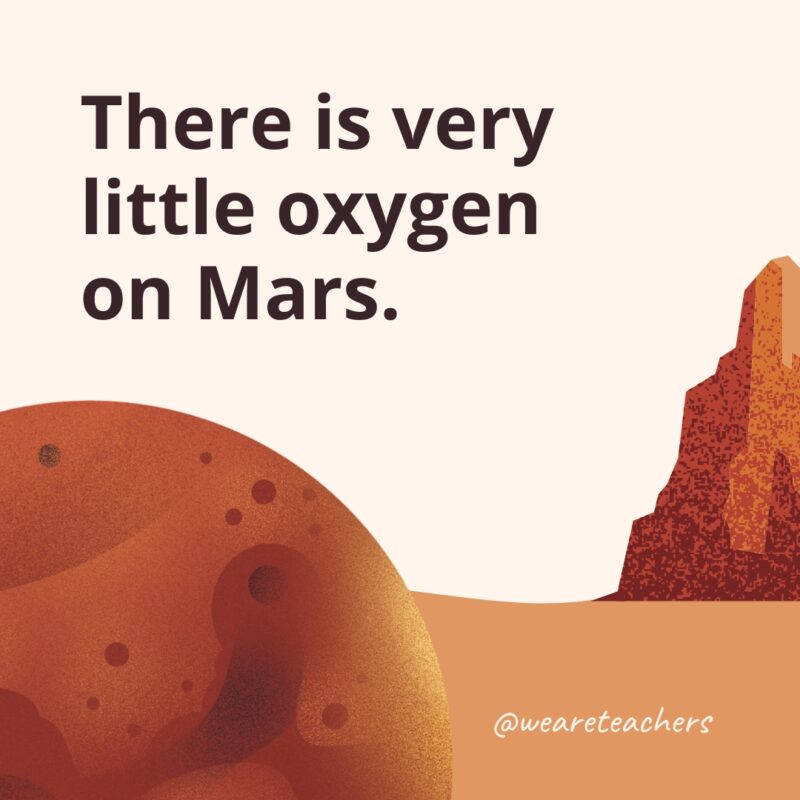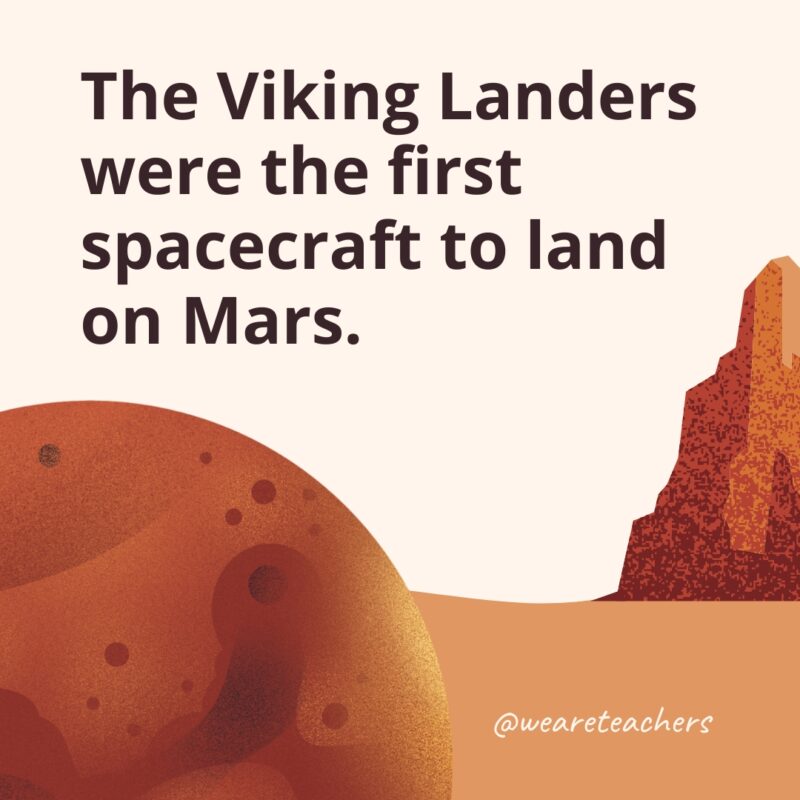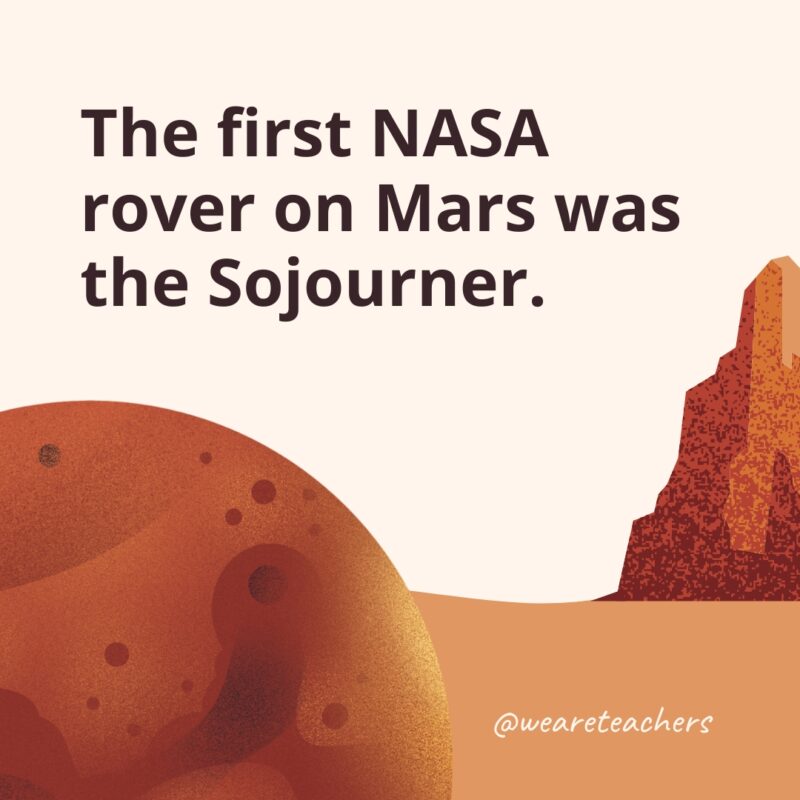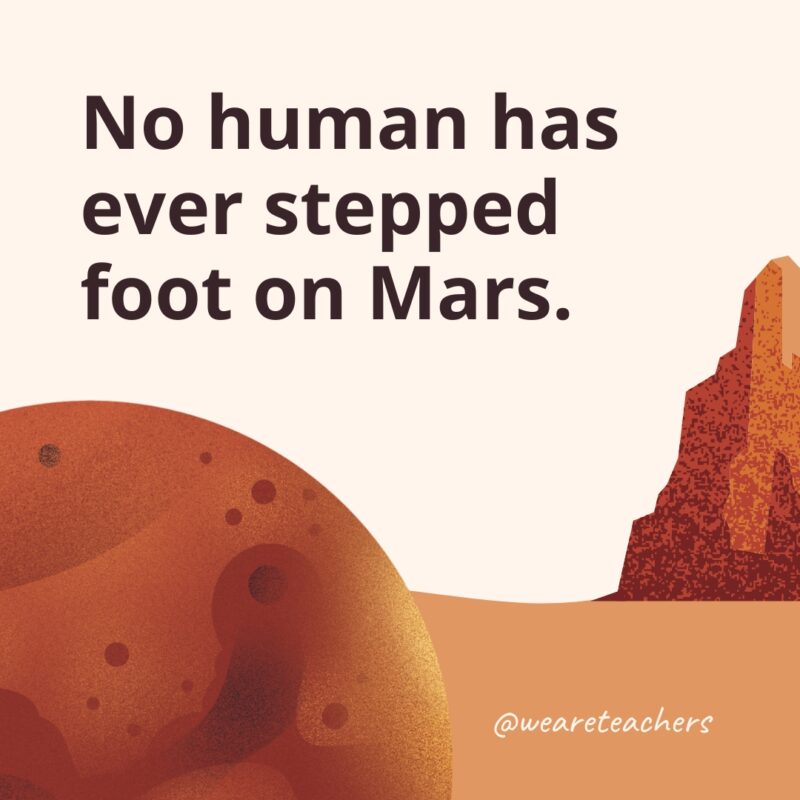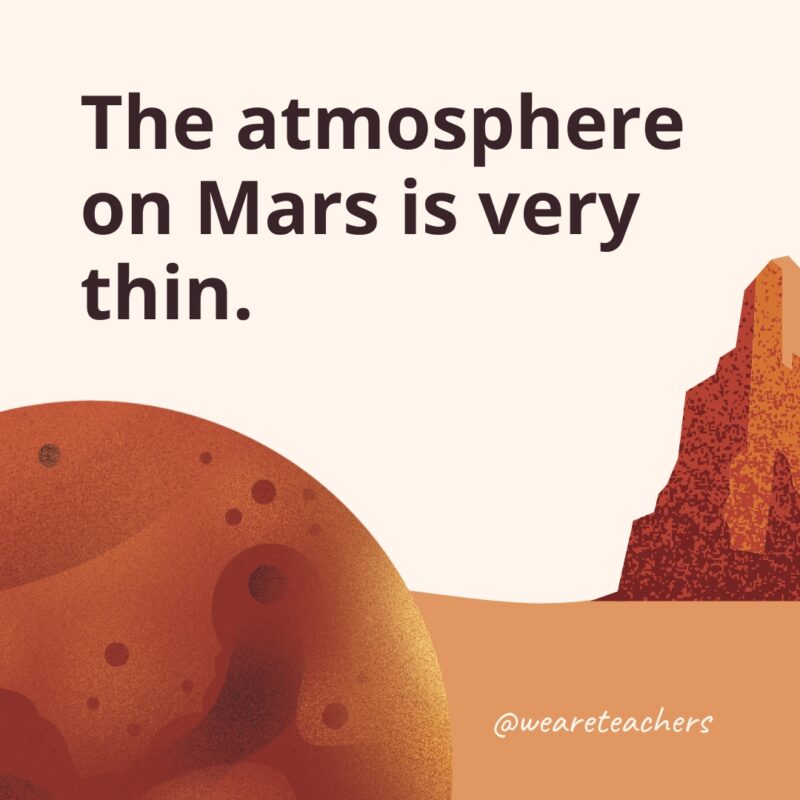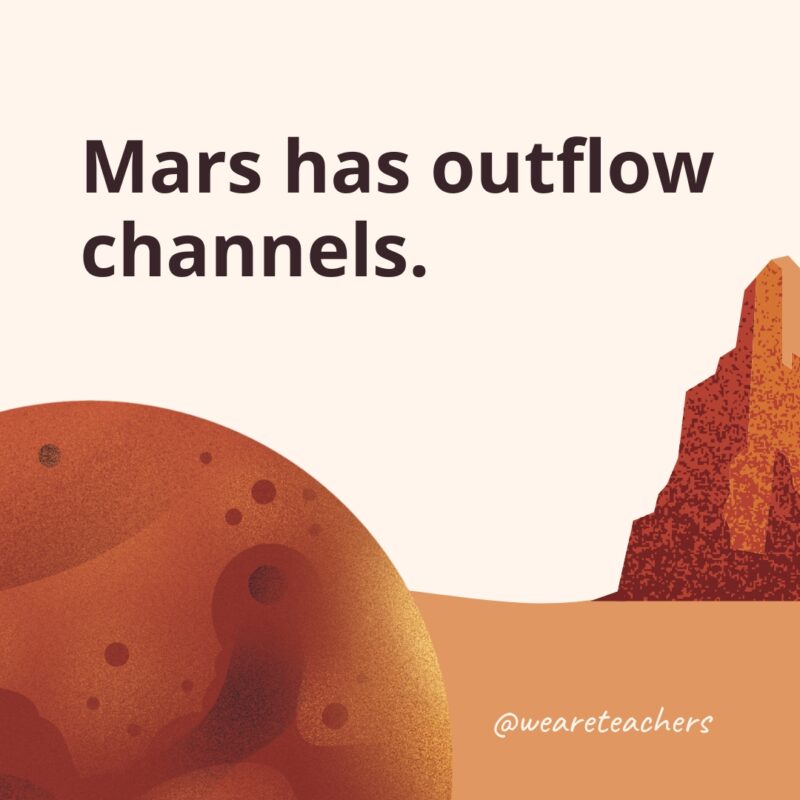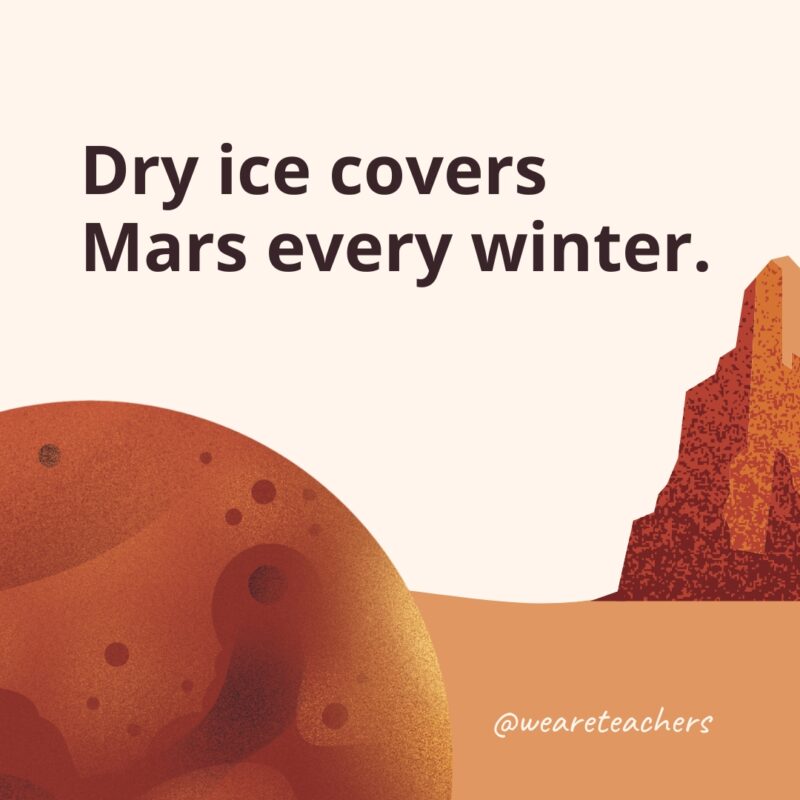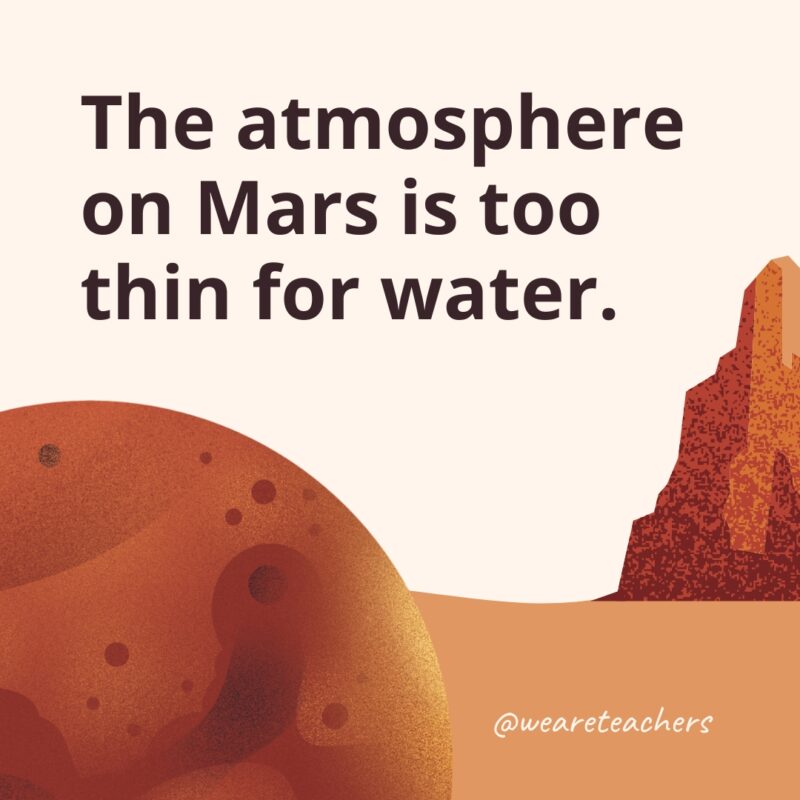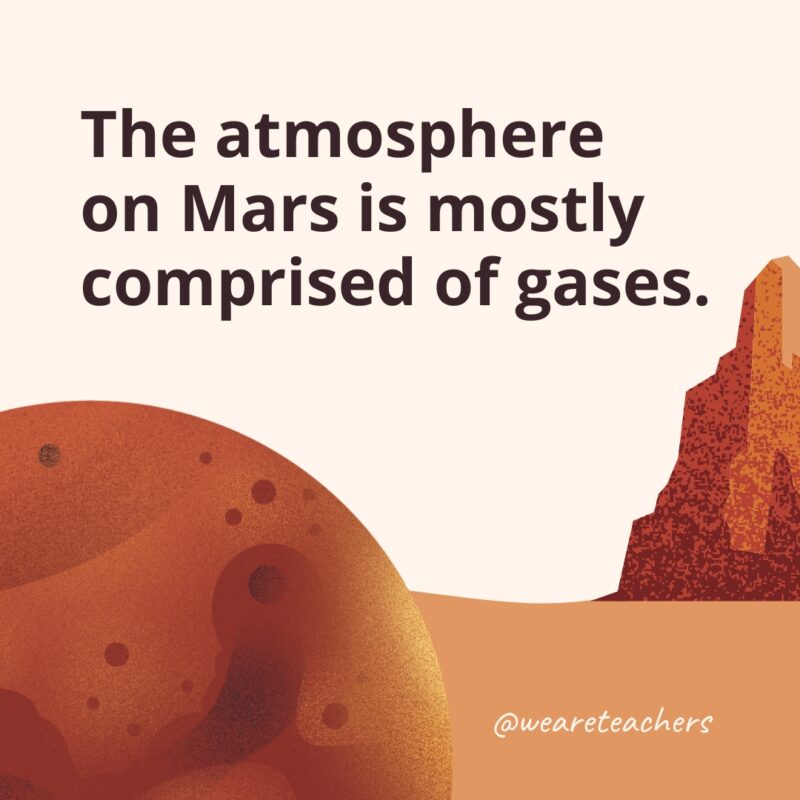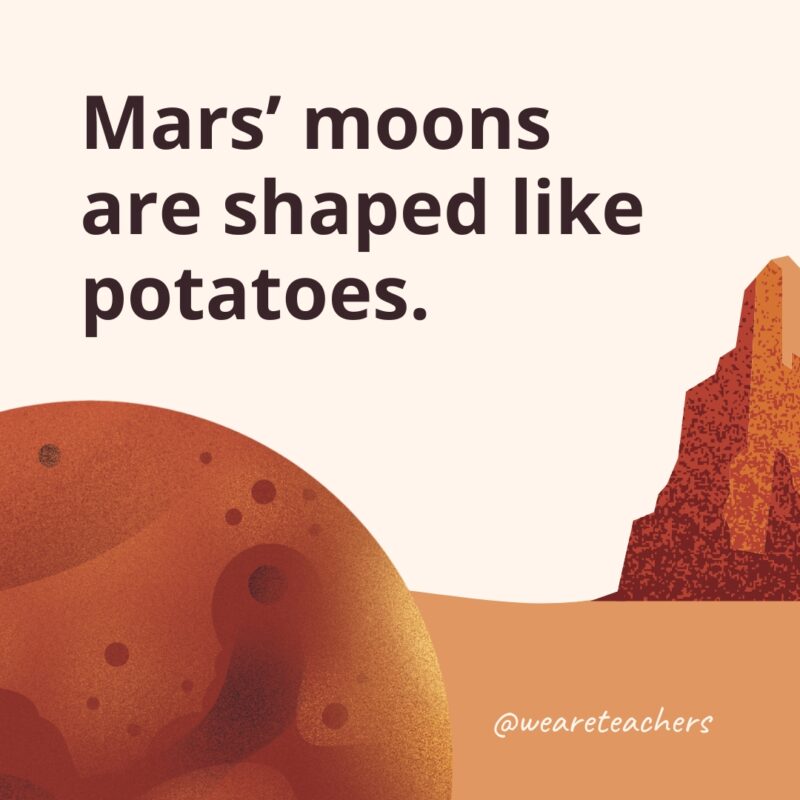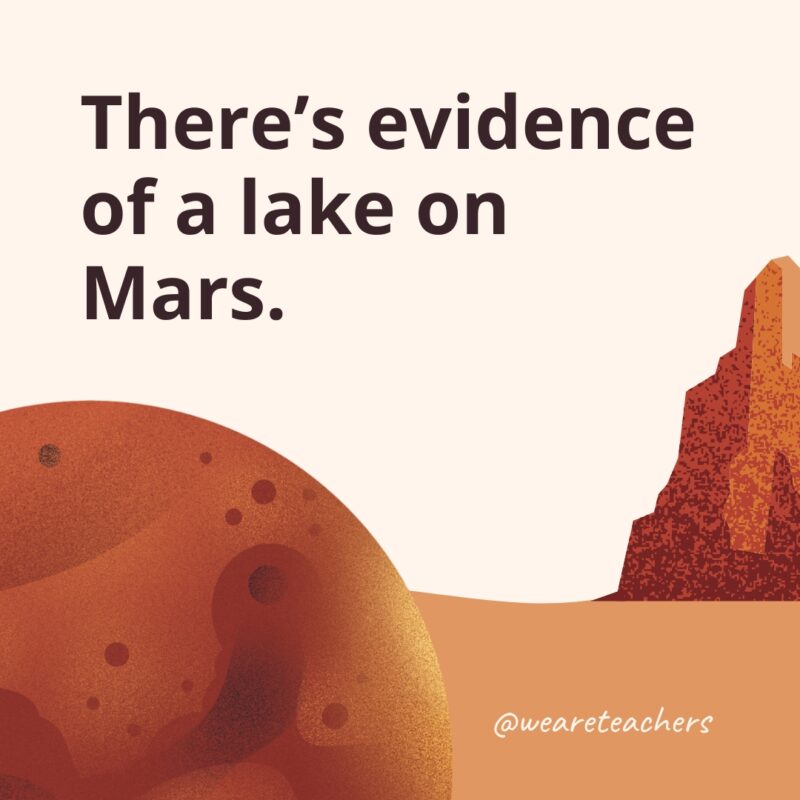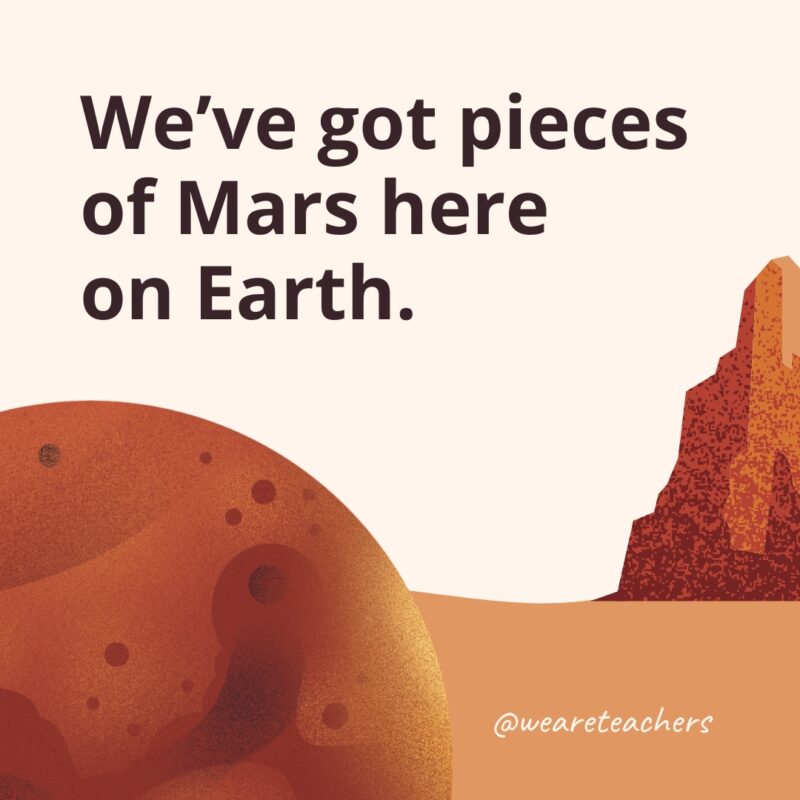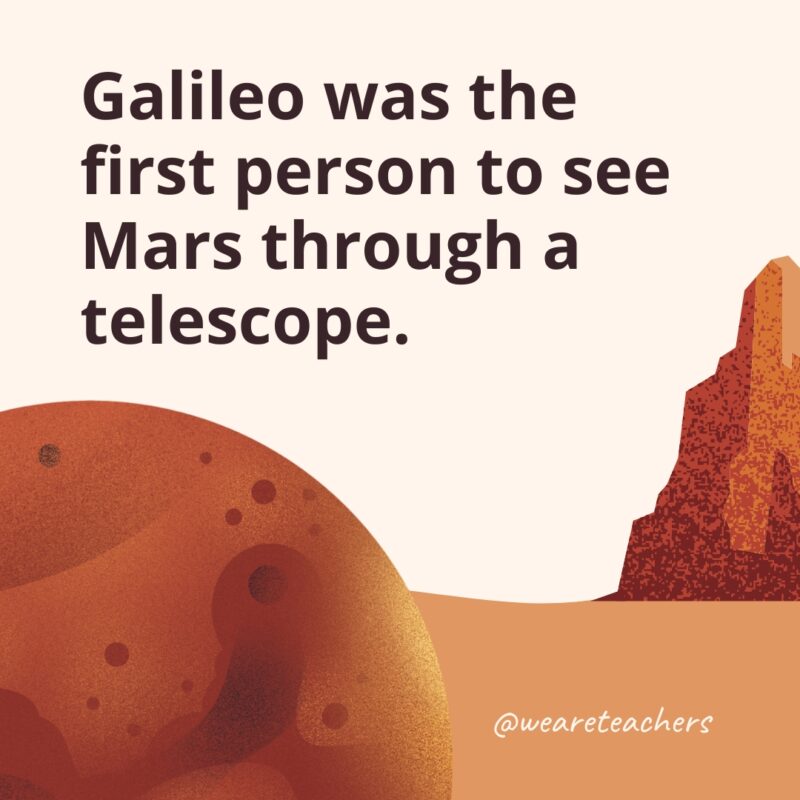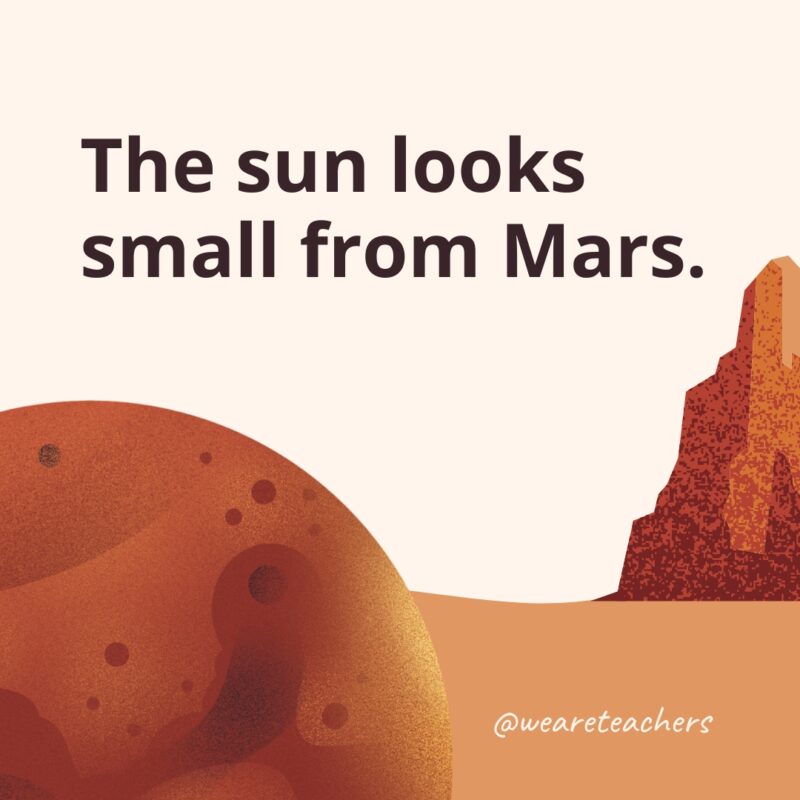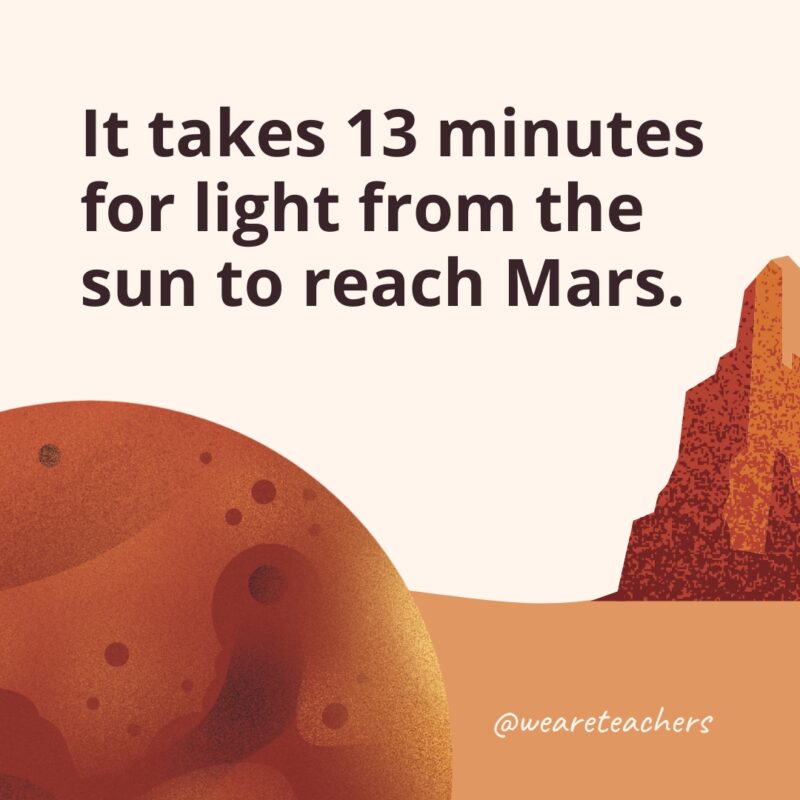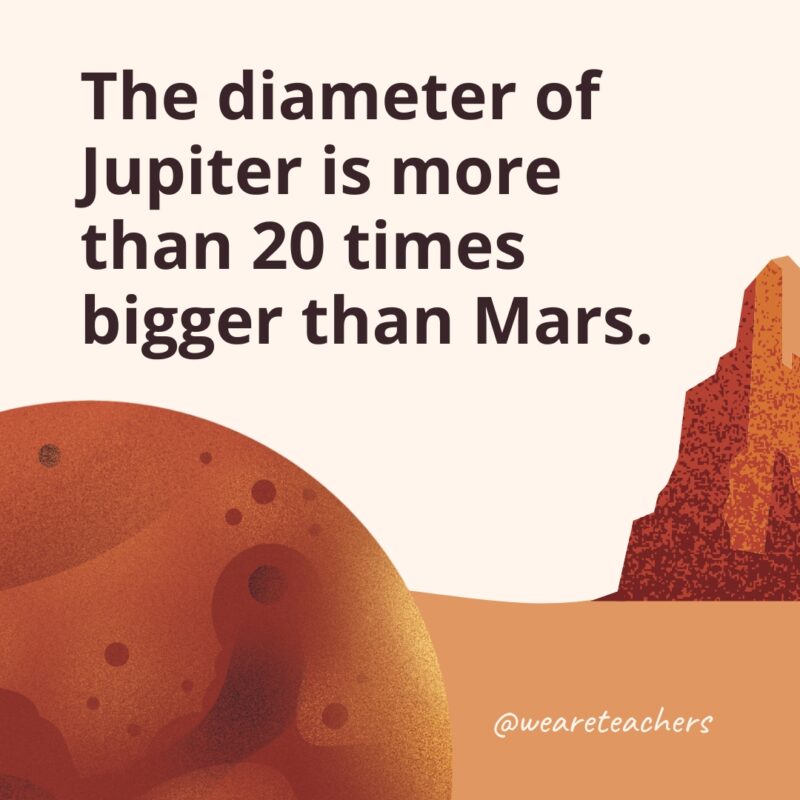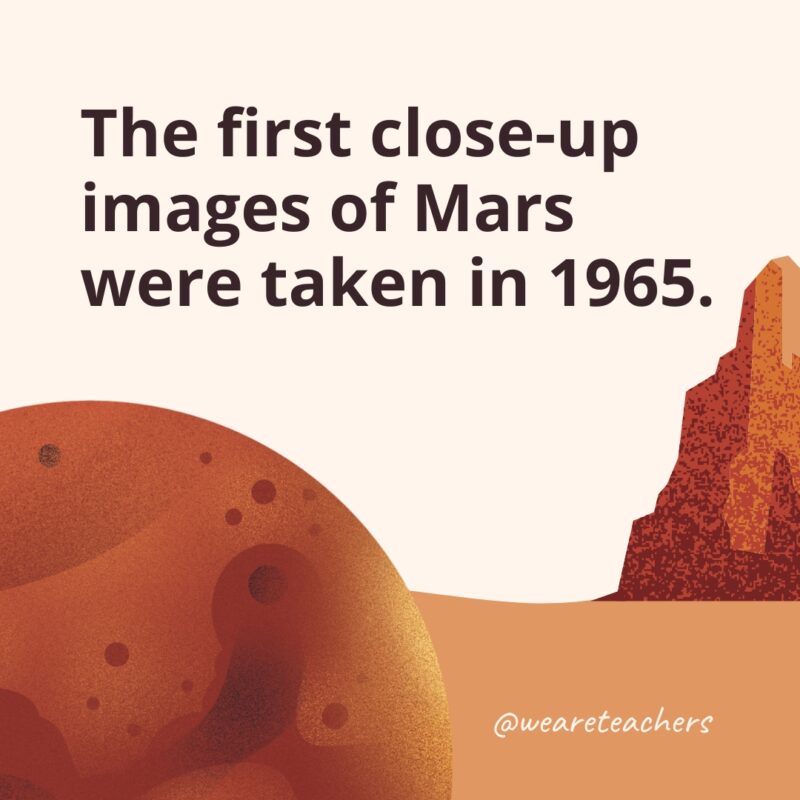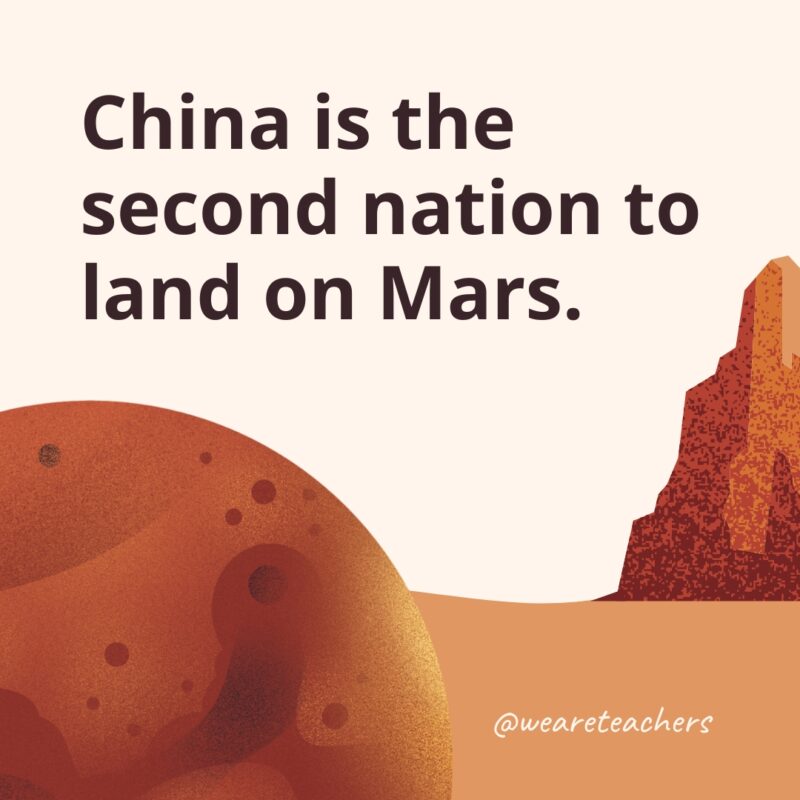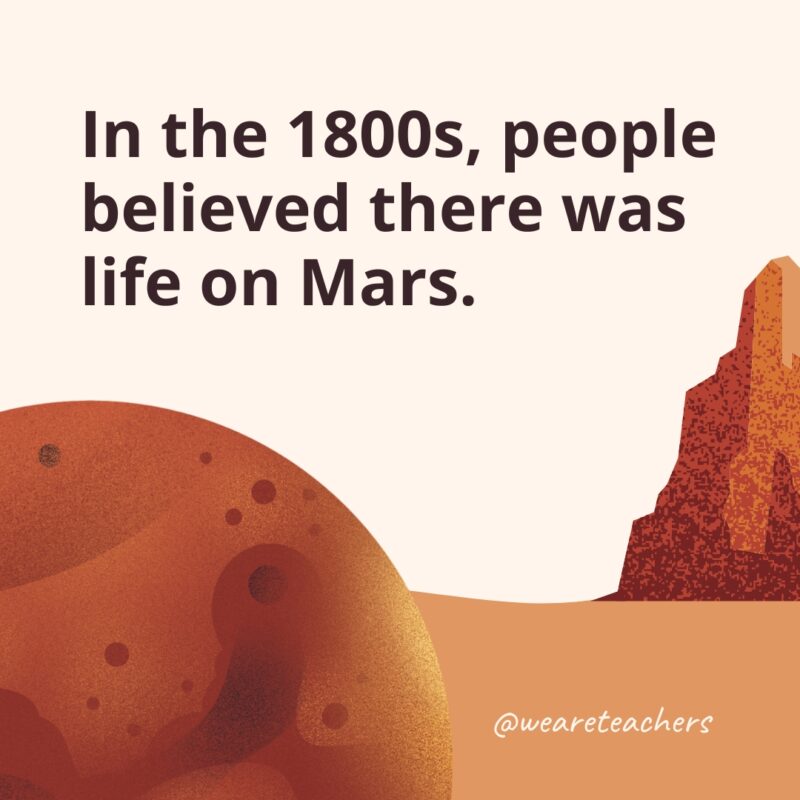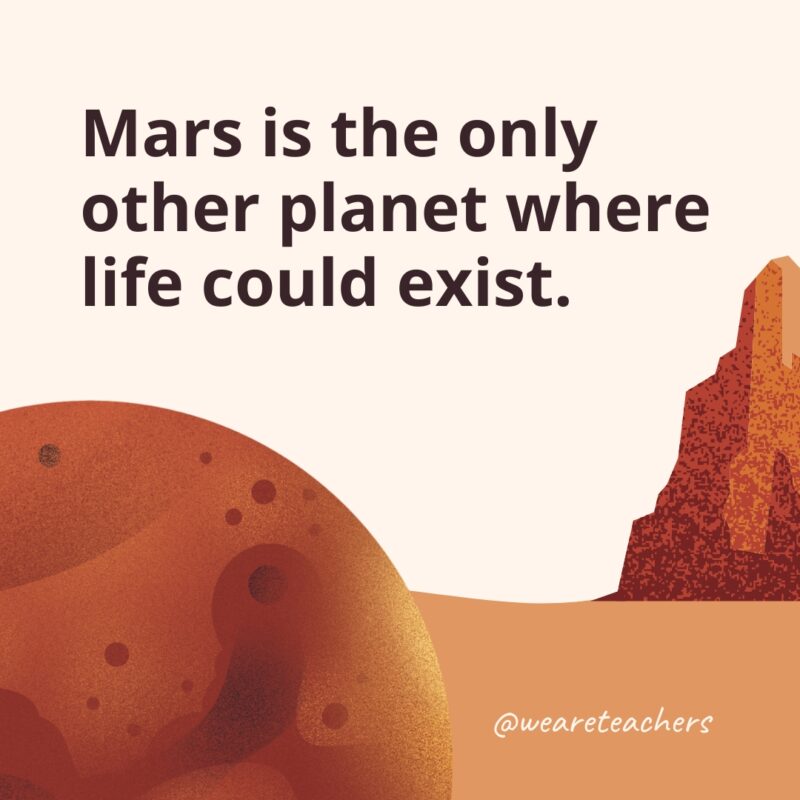It’s fun to imagine what exists out there beyond our world. The vastness of space feels full of possibility and mystery. There’s still so much that we don’t know about our solar system, but what we do know is absolutely fascinating. We’ve put together this list of fun facts about Mars, the only planet other than Earth that might sustain life, to share with students in the classroom.
Fascinating Facts About Mars
1. Mars is called the red planet.
This is one of the most popular facts about Mars! Its soil is rich in iron, which is why the surface and atmosphere look red.
2. Mars is named after the Roman god of war.
The planet’s red color is reminiscent of blood.
3. Mars is about half the size of Earth.
Its diameter is 4,222 miles.
4. Mars is the second-smallest planet in the solar system.
Only Mercury is smaller.
5. Mars is the fourth planet from the sun.
It’s also much, much smaller than the sun. If the sun is about the size of a front door, Mars is the size of an aspirin in comparison!
6. Mars is 4.5 billion years old.
Mars was formed when gravity pulled in swirling gas and dust.
7. Mars is a terrestrial planet like Earth.
It’s not a gas planet like Saturn or Jupiter. The surface of Mars is hard and rocky, which means you can walk on it.
8. It’s very cold on Mars.
It’s far from the sun and any source of heat, so while the average temperature on Mars is around –80 degrees Fahrenheit, it can be as cold as –284°F at its poles.
9. Martian soil is called regolith.
According to NASA, “Regolith is dust and broken rock, and collecting it requires a different approach than collecting rock cores.”
10. Mars has two moons.
The moons, named Phobos and Deimos, are both smaller than Earth’s moon.
11. Only Mars and Earth have polar ice caps.
They are made up of dry ice, or solid carbon dioxide.
12. Days are longer on Mars.
The days on Mars last 37 minutes longer than on Earth.
13. Mars has massive dust storms.
Not only are they the largest in the solar system, but they can cover the whole planet, reach speeds of 125 miles per hour, and last for months!
14. Mars may collide with one of its moons someday.
A collision between Mars and its moon, Phobos, has been predicted, but if it happens, it won’t be for another 50 million years!
15. A year on Mars is longer than a year on Earth.
Since it takes longer for Earth to orbit around the sun, a year on Mars is the same as 687 Earth days (which is almost double!).
16. You can jump higher on Mars.
The gravity on Mars is only 38% of that on Earth!
17. The biggest volcano in our solar system is on Mars.
The red planet is home to Olympus Mons which is three times taller than Mount Everest.
18. Mars can easily be seen in the sky.
You don’t need binoculars or a telescope to find it!
19. Mars has seasons.
While they are longer than those on Earth, Mars also has seasons. They vary in duration, though, since Mars takes an oval orbit around the sun.
20. The longest season on Mars is spring.
Spring lasts for 194 days on Mars.
21. The shortest season on Mars is autumn.
Autumn lasts just 142 days.
22. There are many craters on Mars.
There are an incredible 43,000 craters on the planet with a diameter of 3.1 miles or greater. No wonder some say it looks like Swiss cheese!
23. Hellas Planitia is a massive crater on Mars created from an ancient impact.
It’s located in Mars’ southern hemisphere and is over 3.7 miles deep and 1.24 miles across.
24. Mars has the biggest canyon in our solar system.
The Valles Marineris is 2,500 miles long and 4 miles deep. Our Grand Canyon is much smaller at just 226 miles long and 1 mile deep. Wow!
25. You’d weigh less on Mars.
That’s because it has less gravity pulling you down.
26. Humans may have weaker bones on Mars.
The lack of gravity can cause a loss of calcium.
27. The northern hemisphere on Mars is relatively smooth.
Based on what the Mars rovers have shown us, there aren’t a lot of craters in the northern hemisphere.
28. The southern hemisphere on Mars is filled with craters.
There, you’ll also find highlands, the Hellas Planitia crater, and the Valles Marineris canyon.
29. Mars and Earth have almost the same amount of land.
While Earth is much bigger, it’s covered with a lot of water.
30. There is very little oxygen on Mars.
Humans would need to wear a spacesuit with oxygen to go outside.
31. The Viking Landers were the first spacecraft to land on Mars.
They touched down on the red planet’s surface in 1976.
32. The first NASA rover on Mars was the Sojourner.
After it landed in 1997, the Spirit and Opportunity touched down in 2004.
33. No human has ever stepped foot on Mars.
NASA is hoping to do its first human mission by the 2030s.
34. The atmosphere on Mars is very thin.
Incredibly, it’s just about 100 times thinner than Earth’s atmosphere.
35. Mars has outflow channels.
Many speculate that the channels were created by running water.
36. Dry ice covers Mars every winter.
A layer of carbon dioxide frost forms on the planet’s surface.
37. The atmosphere on Mars is too thin for water.
The environment makes it difficult if not impossible for liquid to remain on the surface.
38. The atmosphere on Mars is mostly comprised of gases.
It consists of carbon dioxide, nitrogen, and argon.
39. Mars’ moons are shaped like potatoes.
Even NASA has described Deimos and Phobos as “raggedy.”
40. There’s evidence of a lake on Mars.
NASA’s Curiosity rover discovered evidence of liquid water under polar caps, which is a possible sign that life once existed on Mars.
41. We’ve got pieces of Mars here on Earth.
Some debris from the planet landed on Earth as meteorites.
42. Galileo was the first person to see Mars through a telescope.
His observation took place in 1610.
43. The sun looks small from Mars.
Since it’s farther away, the sun would look half the size of how we see it on Earth.
44. There have been 40 missions to Mars.
Unfortunately, only 18 were successful.
45. It takes 13 minutes for light from the sun to reach Mars.
No wonder it gets so frosty on the surface!
46. The diameter of Jupiter is more than 20 times bigger than Mars.
Jupiter is the largest planet in our solar system.
47. The first close-up images of Mars were taken in 1965.
NASA’s Mariner 4 captured 22 groundbreaking images.
48. China is the second nation to land on Mars.
The Zhurong Mars rover touched down in 2021.
49. In the 1800s, people believed there was life on Mars.
An astronomer named Giovanni Schiaparelli saw straight lines on Mars and assumed they were canals. When telescopes became more advanced, scientists were able to determine that the lines had been an illusion.
50. Mars is the only other planet where life could exist.
Based on what we currently know, the conditions on Mars could potentially be hospitable for life. Aside from Earth, it’s the only other planet in our solar system that might sustain life.
What are your favorite facts about Mars? Share in the comments below!
If you like these Mars facts and want more articles like this, be sure to subscribe to our newsletters.


